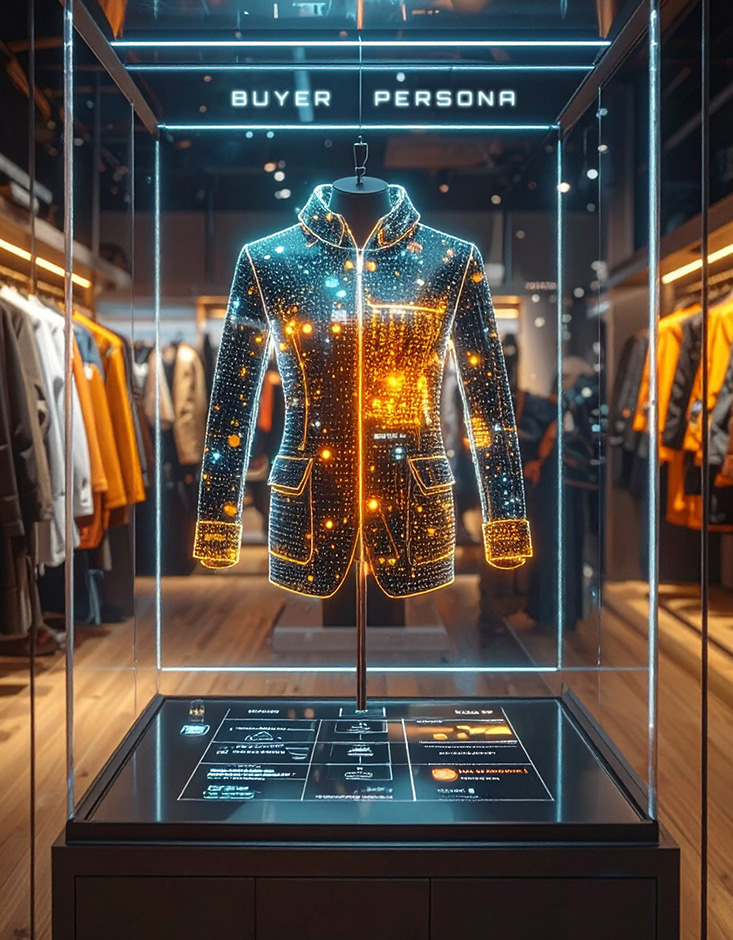This comprehensive web strategy outlined a plan to enhance the online presence of Blue House Salmon by focusing on a more emotionally resonant message, authentic language, cohesive visuals, and an improved user experience. The goal was to connect with eco-conscious consumers and food enthusiasts, translating their mission into tangible value and building a loyal customer base.
1. Messaging Strategy
The core message evolved from simply “farmed for a wild taste” to a more emotional, benefit-driven story that resonated deeply with the target audience. The primary focus was on the why—the positive impact of choosing this specific product for both the consumer and the planet.
Core Message: The future of flavor, responsibly grown. This message combined the superior taste of the product with the brand’s core mission of sustainable, land-based aquaculture. It was aspirational and forward-looking, positioned Blue House Salmon as a leader in a new category of food production. This messaging appealed to both food enthusiasts who sought exceptional quality and environmentally conscious consumers.
Unique Selling Proposition (USP): Land-based, closed-loop aquaculture provided a pristine, controlled environment. This translated directly to a product free from common ocean-based issues such as parasites, microplastics, and heavy metals, which made it a safer, cleaner, and more consistent choice. The USP was a powerful differentiator that could be used across all marketing channels.
Key Messaging Pillars:
Pure Taste: Emphasis was placed on the clean, consistent flavor and firm, buttery texture. The strategy used evocative phrases like “The taste of clean water,” “Unparalleled freshness,” and “The perfect bite.” This pillar was crucial for converting foodies who prioritized quality and flavor.
Planet-Friendly: The low-impact farming model that protected wild salmon populations and ocean ecosystems was highlighted. Messaging explained how the closed-loop system conserved water, eliminated pollution, and reduced the carbon footprint associated with long-distance transportation. This pillar directly addressed the concerns of environmentally conscious consumers.
Passionately Raised: The brand was humanized by focusing on the people and the care that went into raising each fish. The strategy shared stories of the farmers and their commitment to the welfare of the fish. This built trust and added an emotional layer to the brand.
2. Verbal Language
The brand’s voice was approachable, authentic, and inspiring. This meant moving away from overly technical or formal language and embracing storytelling that connected on a personal level.
Tone of Voice: The tone was friendly, transparent, and passionate. Contractions (“it’s,” “we’re”) and conversational phrasing were used to make the brand feel accessible and genuine. In a crisis or for transparency, the tone shifted to one of clarity and honesty.
Storytelling: Narrative was used to explain the process and the mission. Instead of a technical explanation like “Our RAS (Recirculating Aquaculture System) technology ensures…”, a compelling narrative was used: “It all starts with a single egg, grown in pure, recirculating water right here on land, giving our salmon a perfect start.” This approach educated the consumer without overwhelming them.
Headlines & Copy: Strong, active verbs and sensory words were used to describe the product and experience.
Instead of: “Our mission is to provide sustainable salmon.”
Try: “Taste the change. Enjoy a pure, delicious salmon that’s good for you and the planet.” Other examples included: “Sustainable Seafood Has Never Tasted So Good” or “Find Your Flavor, Feel the Difference.”
Call-to-Action (CTA): CTAs were made compelling and benefit-oriented to drive conversions. Instead of just “Shop,” the strategy used “Find Your Flavor” or “Taste the Future.” For recipes, “Get Cooking” or “Discover a New Favorite” were more engaging.
3. Visual Language
The visuals were a powerful extension of the brand’s messaging, reinforcing its commitment to nature, purity, and quality. A cohesive visual system built trust and brand recognition.
Color Palette:
Primary: A deep, calming blue (#00416A) and a vibrant, fresh green (#508C5A) were used. These represented the water and natural environment. The blue evoked trust and purity, while the green symbolized sustainability and life.
Accent: Warm, inviting tones like a soft coral (#F77A65) or a sandy beige (#E0D6B6) represented warmth, food, and the land. These colors were used to highlight key elements and create a sense of comfort and deliciousness.
Photography & Videography:
Authentic: Candid, well-lit shots of the salmon farm were shown, highlighting the cleanliness of the tanks and the health of the fish. This transparency built trust and combated common misconceptions about farmed seafood.
Aspirational: Beautiful, styled food photography of the salmon as the hero ingredient in various dishes was captured. Images were vibrant and well-lit, which made the food look irresistible.
Human-Centric: Genuine portraits of the farmers and team members were featured. Families were shown enjoying meals together. This humanized the brand and helped consumers feel a connection to the people behind the product.
Icons & Graphics: Clean, minimalist icons were used to represent key benefits, such as a water droplet for “pure water,” a leaf for “sustainability,” or a fish for “healthy.” The icons were consistent in style and helped to quickly communicate complex ideas.
4. UX/UI Experience
The website’s structure and design were intuitive and engaging, guiding the user on a seamless journey from discovery to purchase. The user experience was paramount for building trust and ensuring a high conversion rate.
Mobile-First Design: All elements were fully responsive and loaded quickly on mobile devices. A significant portion of traffic was from mobile, so the design prioritized a smooth experience on smaller screens.
Homepage: The hero section featured a powerful video or image with a clear, benefit-driven headline and a strong CTA. The homepage was a narrative journey, introducing the mission, the product, and the people behind it. The content was easily scannable and visually appealing.
Navigation: The menu was simplified to reduce user friction. The core pages were: Home, Our Story/Mission, Our Salmon (products), Recipes, and Shop. A streamlined menu ensured users could find what they needed quickly.
Content Hierarchy: Clear headings, bullet points, and short paragraphs were used to make content easy to read and scan. This helped users quickly grasp key information and encouraged them to explore further.
Trust Signals: Trust-building elements were prominently displayed:
Certifications (e.g., BAP, ASC).
Customer testimonials or reviews, ideally with photos or videos.
Press features and awards.
Product Pages: Each product page had high-quality images, detailed descriptions covering taste and origin, and clear pricing with a “Add to Cart” button. The strategy added a short video demonstrating a cooking technique or showing the product being prepared. Nutritional information and recipe suggestions were included to inspire consumers.
The “Mission” Page: This page was a visual essay that told the full story of why land-based salmon farming was important. The strategy used a mix of text, photos, and video to create an immersive and educational experience that reinforced the brand’s purpose.




